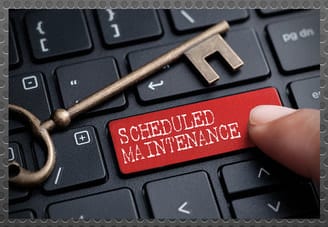- About Us
- Our Services
- Training Expertise
- Crisis Management for Business & Industry
- DOT PHMSA ALERT Rail Car Training
- Emergency Management
- Environmental & HAZMAT
- First Response & HAZWOPER
- Maritime Security
- OSHA Training/Confined Space
- RDPC
- Safer News Gathering
- Safer Ohio Schools Using Threat Assessment Management
- School Safety & Security
- Workplace Violence Prevention
- Courses
- Our Clients
- Media
Shutdowns Come With Unique Safety Challenges

We spotted a nice article last month written by regulatory compliance specialist Karen Hamel that looks at industrial safety risks that may arise at a time not usually anticipated: when a plant is in shutdown mode.
Many manufacturing facilities have annual or semi-annual ‘dark weeks’. This is when the entire complex stops its usual work, so that maintenance teams can update or repair equipment without interrupting production. A lot of companies, such as auto manufacturers, routinely take this step in the last week or two of the calendar year, when many employees appreciate the holiday break.
During shutdown, a skeleton crew of employees may be all the staff still working in a very large plant, along with contractors hired for specific maintenance or refitting jobs. This situation in itself presents a safety hazard. With only a few people in the buildings, the usual care taken in mobility may be forgotten. For example, a forklift driver who is very careful when the plant is busy might be careless if he or she is driving their vehicle in the facility during a shutdown. The driver may assume that they are alone in a corridor and not take the typical precautions, such as using the horn before turning a blind corner. This can result in an accident that harms a lone pedestrian in the facility.
And if such an incident happens, and the driver needs help caring for the injured person, they may not be able to contact the usual in-house resources easily. During shutdown periods, it may be wise to provide any and all on-site personnel with radios that can immediately summon whatever safety and security people are still around, or at least to be certain that everyone has a cell phone and cell service to call 9-1-1. And if a contractor should need to make that call, they have to be cognizant of where they are when they call for help. They need to know more than the name of the company. They should be able to provide an address or road, the name or description of the building where they are working, and the part of the building where they can be found (north side, loading dock, etc.).
Hamel points out that during times when annual cleaning or repair takes place, workers are likely to enter spaces that are not entered any other time. These areas may well meet the OSHA definition of confined space. If so, any person entering the space must be properly trained for an appropriate entry, safe work in such spaces (especially when cleaning, as chemicals may be used), and proper exit. Custodial staff or contractors may not be aware of confined space regulations, but employers are responsible for their employees’ understanding of these rules, and for their training and safety equipment.
Changing out pipelines or containment vessels is a common task during shutdown times, and Hamel notes that pipes and vessels not only need to be purged and verified as such, but also allowed to ventilate before they are disassembled or replaced. The chances of residual vapors becoming flammable or explosive may increase when pipes or tanks are not filled with their usual contents – another unique symptom of working during a shutdown.
Like any major task, work during production shutdowns needs to be carefully planned and that preparation should be done long before the shutdown period. EHS managers should remind maintenance and sanitation supervisors of the dangers that come to bear when limited amounts of personnel are engaged in tasks that can’t be called “everyday”.
Providing necessary training programs like confined space rescue and creating safety risks assessments are just two ways that Findlay All Hazards can help manufacturers plan for those times when production takes a back seat to repair and replacement.
